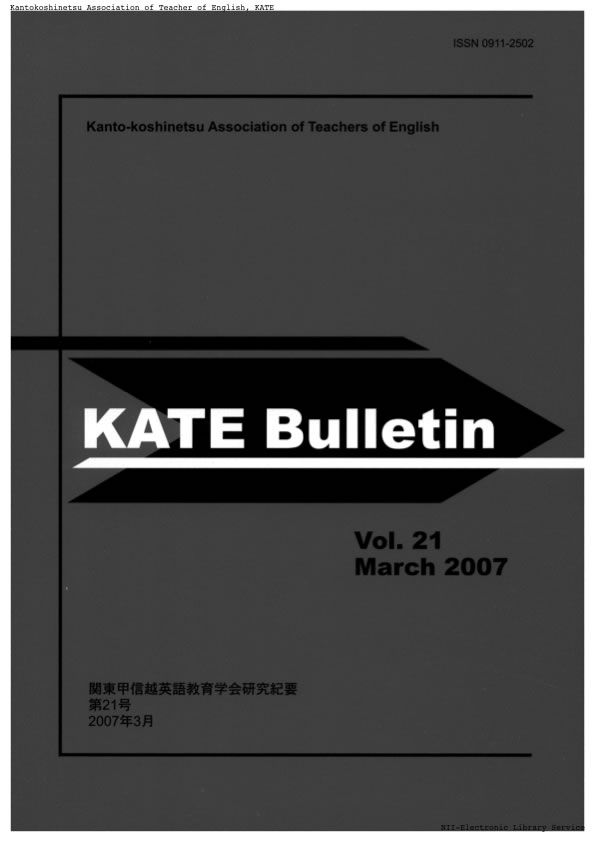Volume 21
Displaying 1-15 of 15 articles from this issue
- |<
- <
- 1
- >
- >|
-
Article type: Cover
2007 Volume 21 Pages Cover1-
Published: March 01, 2007
Released on J-STAGE: July 14, 2017
Download PDF (3030K) -
Article type: Index
2007 Volume 21 Pages Toc1-
Published: March 01, 2007
Released on J-STAGE: July 14, 2017
Download PDF (35K) -
Article type: Article
2007 Volume 21 Pages 1-12
Published: March 01, 2007
Released on J-STAGE: July 14, 2017
Download PDF (927K) -
Article type: Article
2007 Volume 21 Pages 13-24
Published: March 01, 2007
Released on J-STAGE: July 14, 2017
Download PDF (960K) -
Article type: Article
2007 Volume 21 Pages 25-36
Published: March 01, 2007
Released on J-STAGE: July 14, 2017
Download PDF (997K) -
Article type: Article
2007 Volume 21 Pages 37-48
Published: March 01, 2007
Released on J-STAGE: July 14, 2017
Download PDF (1217K) -
Article type: Article
2007 Volume 21 Pages 49-60
Published: March 01, 2007
Released on J-STAGE: July 14, 2017
Download PDF (910K) -
Article type: Article
2007 Volume 21 Pages 61-72
Published: March 01, 2007
Released on J-STAGE: July 14, 2017
Download PDF (1073K) -
A Longitudinal Study of Complexity in Spoken Performance by Japanese EFL Junior High School StudentsArticle type: Article
2007 Volume 21 Pages 73-84
Published: March 01, 2007
Released on J-STAGE: July 14, 2017
Download PDF (745K) -
Article type: Article
2007 Volume 21 Pages 85-96
Published: March 01, 2007
Released on J-STAGE: July 14, 2017
Download PDF (1051K) -
Article type: Article
2007 Volume 21 Pages 97-108
Published: March 01, 2007
Released on J-STAGE: July 14, 2017
Download PDF (1309K) -
Article type: Appendix
2007 Volume 21 Pages App1-
Published: March 01, 2007
Released on J-STAGE: July 14, 2017
Download PDF (33K) -
Article type: Appendix
2007 Volume 21 Pages App2-
Published: March 01, 2007
Released on J-STAGE: July 14, 2017
Download PDF (33K) -
Article type: Appendix
2007 Volume 21 Pages App3-
Published: March 01, 2007
Released on J-STAGE: July 14, 2017
Download PDF (33K) -
Article type: Appendix
2007 Volume 21 Pages App4-
Published: March 01, 2007
Released on J-STAGE: July 14, 2017
Download PDF (33K)
- |<
- <
- 1
- >
- >|
